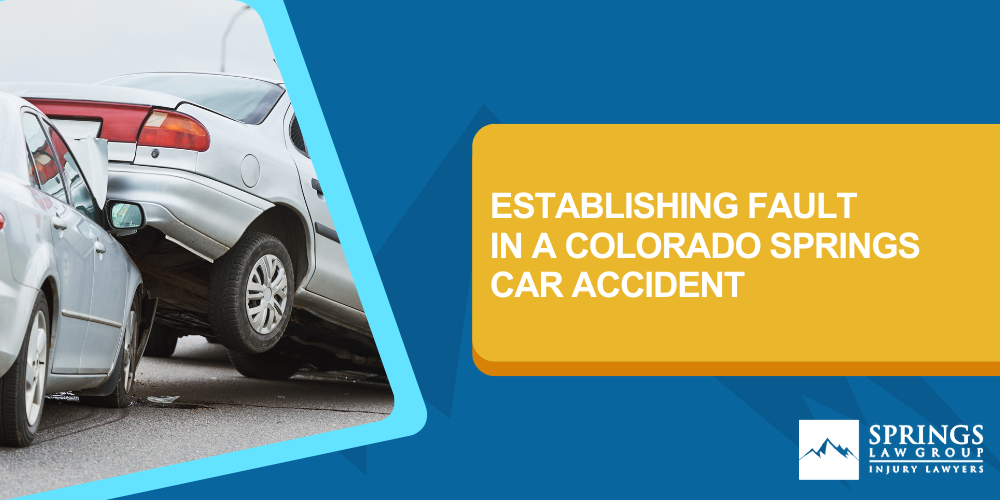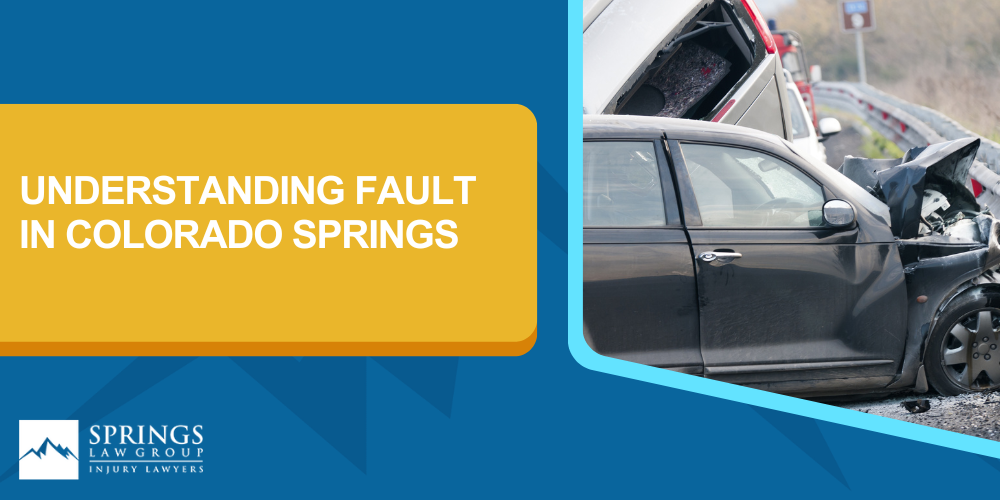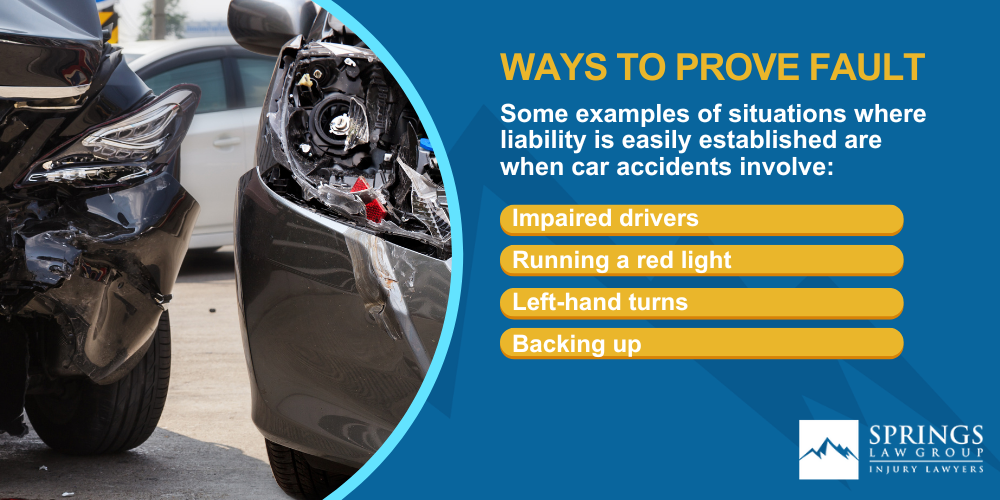Establishing Fault in a Colorado Springs Car Accident

Colorado is an at-fault state when it comes to car accidents, following the same legal doctrine as a majority of the states across the country. Simply put, this means that the individual who caused the car accident – as well as the car insurance company covering him or her – is financially and legally responsible for compensating those who were hurt or whose property was damaged.
Understanding Fault in Colorado Springs
Liability – or fault, in layman’s terms – in a Colorado Springs, Colorado car accident refers to the financial and legal obligation of one party to make the other party “whole again.” This is typically done through monetary compensation to the accident victim for damages caused, including personal injury and property damage. Generally, a person is found to be at fault as a result of recklessness or negligence. Negligence is the failure to exercise reasonable care to avoid harm to others. Recklessness, on the other hand, is the intentional or willful failure to exercise reasonable care to avoid harm to others.

The state of Colorado follows the legal doctrine of modified comparative fault. This legal theory is used when determining whether (1) an injured party (the plaintiff) may recover monetary compensation and (2) if so, what amount should be awarded. Under Colorado law, if both (or all) drivers are equally at fault for the crash, neither party may collect monetary compensation. In fact, if the plaintiff is found to be 50 percent or more at fault for causing the crash, he or she is completely barred from collecting monetary damages. If the plaintiff is found to be less than 50 percent at fault for the collision, his or her monetary compensation will be reduced by the percentage of blame that is attributed to him or her.
Ways to Prove Fault

Regardless of whether a traffic citation was issued or not by a Colorado Springs law enforcement officer, there are several factors that are considered when determining who was at fault in a car accident. Some examples of situations where liability is easily established are when car accidents involve:
- Impaired drivers: someone who is under the influence of drugs and/or alcohol is typically found at-fault;
- Running a red light: a per se traffic violation, red light-runners are often at-fault in car accidents resulting from the violation;
- Left-hand turns: when a driver is making a left turn across oncoming traffic, because he or she must yield the right of way, the fault is often attributed to that driver; and
- Backing up: regardless of the circumstances of the crash, a driver who backs up into another car is often found to be at fault.
Unfortunately, not all accidents involve facts that establish fault so clearly. Aside from the Colorado Springs law enforcement officer’s crash report, there are several pieces of evidence that can be used to establish fault. These may include pictures and/or videos of the accident scene, the location and type of damage to the vehicles, statements provided by witnesses to the crash, traffic citations, surveillance footage, and more.
Legal Help in Colorado Springs

At the Springs Law Group, we can fight for the compensation to which you are entitled. If you or someone you care about has suffered injuries in a Colorado Springs car accident, give us a call today.
